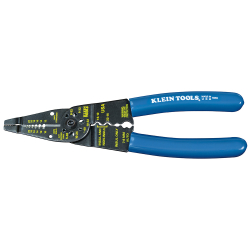Bensiff
Well-Known Member
- Joined
- Mar 13, 2008
- Messages
- 4,835
- Reaction score
- 411
By luck I opened my version of a Kal clone to see something with the wiring and was shocked to see one of the legs of the 220 wire and terminal had cooked pretty solidly. It's on a 30 amp gfci, the elements have a selector switch so there is no way for the system to draw over 30 amps, 10 gauge wire. So, the only thing I can think is that the bond from the wire to the contactor had too much resistance causing the hot spot. The system has done around 15 batches without a hitch. I found no evidence that anywhere else in the system had overheated.
I only have a standard multimeter and it isn't sensitive enough to read ohms at a meaningful level so right now I'm guessing that the issue is a bad bond.
Thoughts on other causes that I'm over looking? For now I replaced the wire and terminal, cleaned up the screw and bonding surface to shiny metal and reinstalled.
View attachment ImageUploadedByHome Brew1428540038.733452.jpg
I only have a standard multimeter and it isn't sensitive enough to read ohms at a meaningful level so right now I'm guessing that the issue is a bad bond.
Thoughts on other causes that I'm over looking? For now I replaced the wire and terminal, cleaned up the screw and bonding surface to shiny metal and reinstalled.
View attachment ImageUploadedByHome Brew1428540038.733452.jpg






